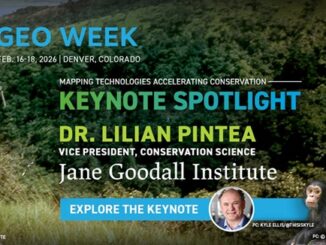In 2000, I was just finishing a two year stint living in Belgium working on modeling downstream facilities. Yes, we used close-range photogrammetry. Really dull technical work, but we succeeded in projects across Europe (Italy, Norway, Germany, UK). I analyzed three laser-scanners around that time and compared them to our Close-Range Photogrammetry workflow. These were hugely expensive, unreliable, enormous, Robbie-the-robot units with 800 points per second (suddenly I feel old but this was 1999 I think)! I recommended waiting to get into that business; four years later my then employers entered that market successfully and are doing well.
I use this story to illustrate one thing I learnt about technology change – don’t let it drive your business; let your business drive technology selection. Maybe a couple of anecdotes to explain why I think top-down is better than bottom-up in this case:
1. RFID technology. Awesome, we can link that spatially and give an online system that locates everything the client owns. The problem is that their entire supply-chain would need to change its work processes. This is a massive undertaking
2. Circular emails between disagreeing stress and hydraulics engineers leads to massive inefficiency in the design process. Ok, we’ll make a Geomatics Design Lab where we can display all the data (spatial and non-spatial) simultaneously and they can sit together and design it right there.
So, the first anecdote was driven by a desire to use new technology, and the second was driven by a business need that Geomatics could meet. Only the second anecdote ended in success (kudos to my old boss for listening and taking action in that case)
Our business strategy changes less quickly than technology. In engineering companies, much of the “bulk” engineering will be done overseas. Our clients demand it; Canada’s specialists are too expensive, similar to those in the USA and Australia.
We will increasingly concentrate on the conceptual, front-end, high-value studies, supporting our clients in their business decisions (including but not limited to engineering). More desktop studies? With global extent? That sounds like Geomatics to me! Let’s get some global datasets! A couple of years ago, I had to get data for a rail design in Colombia; we could not start work for lack of decent elevation data (not entirely true, we accessed the SRTM data from JPL but this is very coarse). With new seamless global datasets we can start work within days and not weeks.
Other business drivers in the engineering World are increasing social license awareness, safety concerns, and a shortage of workers. In the first case, I urge clients who want to design oil pipelines to consider a spill-impact analysis of their routes as part of the design. Traditionally, this has been an emergency response planning tool. That’s a bit late in my opinion (and now in the opinion of the National Energy Board). Increased desktop analysis can reduce field verification visits – the number one safety problem for engineers in the field is transportation accidents, enough said. Plenty of companies use as-built data from Geomatics specialists in order to train their people on maintenance tasks and to optimize team mobilization to reduce re-visits – increased use of this kind of technology will help to ameliorate worker shortages.
A couple of things we do to help us accept new work without spreading ourselves too thin in technology and training is to lease software to aid cash flow, and joint venture with other companies to provide specialist services (e.g. hyper spectral vegetation analysis) so that the Geomatics team can address larger work scopes. This limits our risk while allowing us to broaden our horizons.
So, grab that new technology; it’s exciting and shiny. But make sure it will fit your business plan. I am fortunate that I have a seat at the table when it comes to the strategy determination for my company. My observation is that colleagues who have succeeded in this regard have injected Geomatics into the boardroom. Last year my team made a simple map of the distribution, within Calgary, of our 2600-strong workforce. The Managing Director looked at this to help decide on new office locations. We colour-coded it, of course.




Be the first to comment